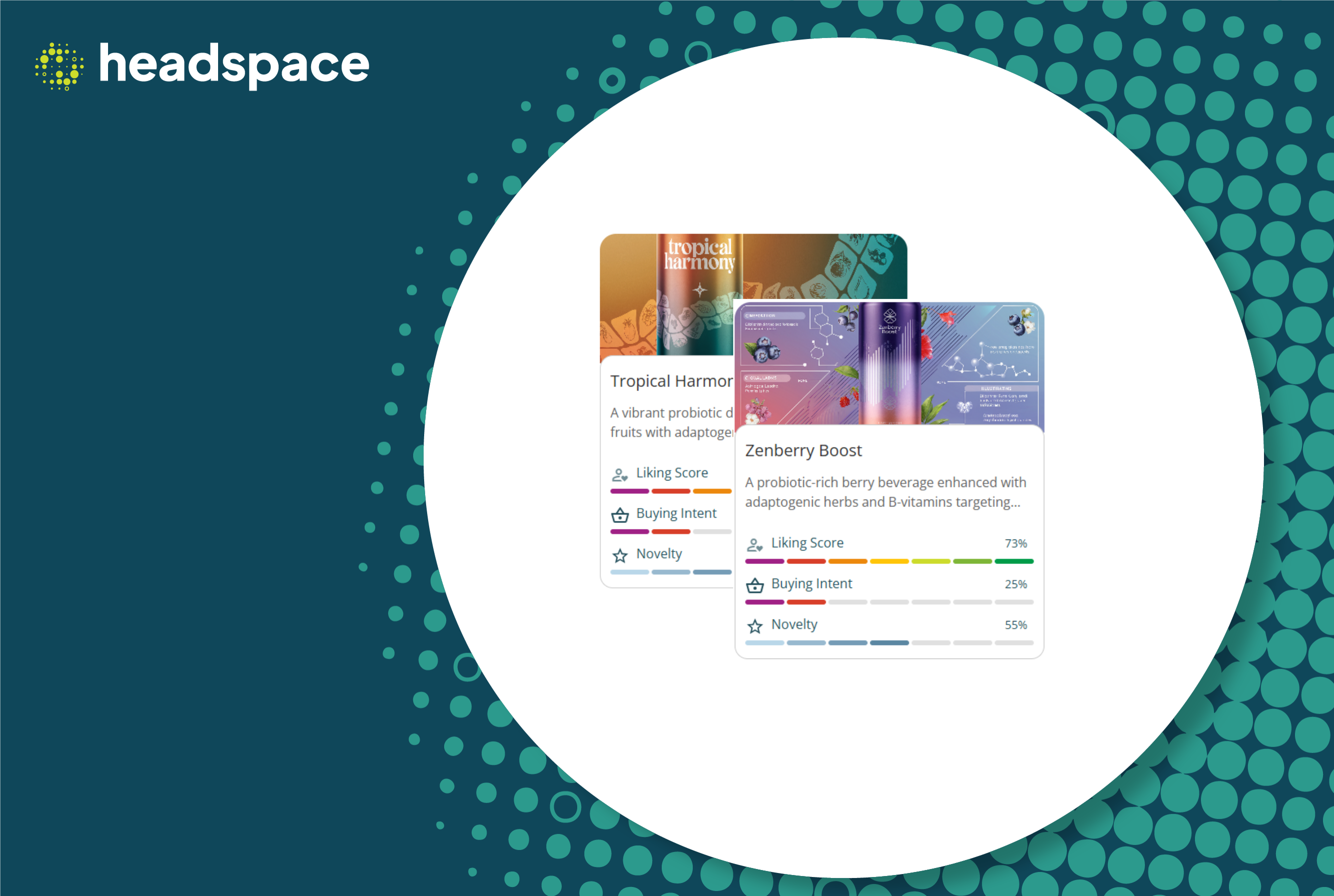2 min read
Consumer-centric innovation: A new standard for CPG brands
The CPG landscape has shifted dramatically. Where gut instinct once ruled, today's winners put consumers at the center of every decision. What...
3 min read
![]() Headspace by Foodpairing
:
Jul 18, 2025 12:02:28 PM
Headspace by Foodpairing
:
Jul 18, 2025 12:02:28 PM
.png)
Walk into any grocery store and you'll hear the same narrative: CPG innovation is dead. Shelves dominated by endless variations of the same products. Private labels eating market share. Challenger brands disrupting century-old categories with half the budget and twice the speed.
But here's the plot twist: CPG innovation isn't dying – it's just broken.
Is there truly a product innovation drought in CPGs? A study from Mintel showed that global innovation had experienced an all-time low in 2024. Their data further suggested that a mere 35% of global CPG launches between Jan to May 2024 were genuinely new products.
Senior executives at CPG companies may point to multiple reasons for the fall in innovation, from declining new product success rates, rising development costs, and the seemingly endless parade of challenger brands eating away at market share. The narrative is compelling, but is it accurate?
The reality is far more nuanced. While traditional innovation approaches are indeed struggling, consumer demand for new products has never been higher. As per data 38% of adults frequently seek out new food and beverage products (this number being higher among Gen Z.)
The problem isn't that innovation is broken (the demand is clearly present,) the problem is that we need to upgrade the tools that drive innovation.
The brutal reality: 85% of new CPG products fail within their first year. The average concept-to-shelf timeline stretches 18-24 months. A single Central Location Test (CLT) costs $50,000-$150,000 and takes 10-12 weeks to deliver insights that are often too late to matter.
But here's where it gets interesting: the biggest bottleneck isn't creativity or market demand—it's validation.
Picture this: Your R&D team develops a breakthrough functional beverage concept. By the time you've navigated focus groups, CLTs, and market validation, three competitors have launched similar products, consumer trends have shifted, and your "innovative" concept feels stale.
The innovation tax is crushing speed and creativity.
Traditional research methods weren't designed for today's velocity. They're archaeological tools in a real-time world. While brands spend months validating concepts through conventional research, agile competitors are testing, iterating, and launching at digital speed.
The result? Innovation paralysis disguised as thoroughness. Teams know they need to move faster, but they're trapped in validation cycles that guarantee they'll always be followers, never leaders.
Here's where AI innovation gets interesting: it's not just faster and cheaper – it's fundamentally more strategic.
Trend Integration at Light Speed AI platforms continuously analyze emerging consumer trends, cultural shifts, and market dynamics. Instead of chasing trends after they've peaked, brands can identify and capitalize on emerging opportunities while they're still invisible to competitors.
Hyper-Targeted Consumer Segmentation Forget broad demographic buckets. AI reveals micro-segments with specific needs, preferences, and trigger points. This precision enables brands to develop products that feel personally designed for their target consumers, not mass-market compromises.
Concept Validation Without Compromise Traditional research forces binary choices: speed or accuracy, cost or comprehensiveness. AI validation delivers both. Teams can test multiple concept variations simultaneously, exploring creative territories that would be prohibitively expensive through conventional methods.
The competitive advantage compounds: While traditional research validates one concept at a time, AI-powered platforms can test dozens of variations, identify the strongest performers, and optimize based on real consumer psychology – all before competitors finish their first focus group.
This isn't just process improvement; it's strategic transformation. Brands using AI-powered innovation aren't just moving faster – they're developing fundamentally better products because they can afford to explore, experiment, and iterate without traditional constraints.
The result? Hero products that don't just meet market needs – they anticipate and shape them. Innovation that leads markets instead of following them. Product development that operates at the speed of consumer desire, not corporate bureaucracy.
Innovate smarter
The CPG innovation crisis isn't about lack of consumer demand or creative bankruptcy. It's about outdated tools constraining breakthrough thinking.
AI-powered innovation platforms are flipping the script. They're enabling brands to validate early, iterate fast, and go to market with confidence. They're replacing expensive, slow research with instant, precise insights. They're transforming product development from a risk-heavy marathon into an agile sprint.
The question isn't whether AI will transform CPG innovation – it's whether your brand will lead the transformation or get left behind.
The future belongs to brands that can predict consumer desires, not just react to them. Companies that validate concepts in minutes, not months. Teams that turn innovation from an expensive gamble into a precision science.

2 min read
The CPG landscape has shifted dramatically. Where gut instinct once ruled, today's winners put consumers at the center of every decision. What...
.png)
The food and beverage industry is a fast-moving landscape where new trends emerge rapidly—from spicy flavors and adaptogenic drinks to plant-based...

Despite their best efforts, many Food & Beverage (F&B) innovation teams still struggle with one frustrating reality: their products fail to resonate...